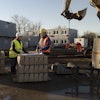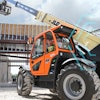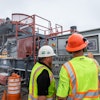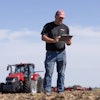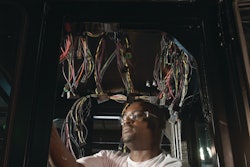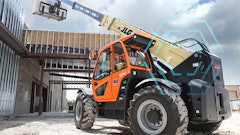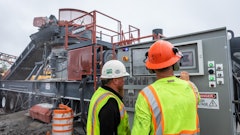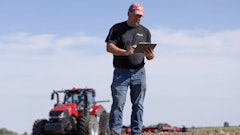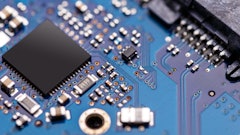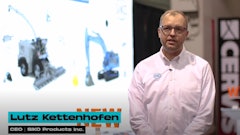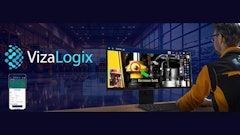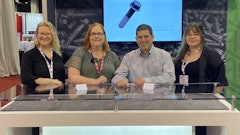Traditional design and verification procedures to develop or improve components and systems for off-highway vehicles often can be time-consuming, costly and, in some cases, physically impractical. Typically, many disciplines will be involved from concept to launch and the number of prototype and test iterations can be staggering. All these challenges have helped accelerate marketplace competencies associated with virtual product development (VPD).
Looking at off-highway drivetrains as a casebook example, VPD technologies have been successfully applied to maximize efficiency, streamline development processes, and increase the reliability of transmissions and gearboxes, final drives and differentials, and hybrid systems.
Advanced simulation tools have additionally been introduced to calculate drivetrain efficiency by accurately simulating gearboxes, power take-off units, and final drives:
- A “virtual test bench” offers the capabilities to analyze rotating parts virtually while they are in the design stage.
- Test strategies can be engaged to verify designs and evaluate the performance of components in prototypes.
- Systems can be modeled using unique computer tools.
Faced with legislation requiring significant reductions in CO2 emissions over the next decade, off-highway OEMs strive for opportunities to improve energy efficiency. A primary area of focus is the vehicle’s driveline. Comprised of complex, interrelated systems — transmission, power take-off unit, and final drive — the driveline holds significant potential for improving overall vehicle efficiency and reducing CO2 emissions.
Using proprietary SKF software called Orpheus, engineers at SKF are able to calculate the efficiency of gearboxes, power take-off units, and final drives. With new Vehicle Environmental Performance (VEP) software, SKF is now able to factor in driver behavior under various operating conditions to quickly and accurately assess potential for real-life CO2 emission reduction. This is an important tool for OEMs and suppliers, because it provides the capability to explore the merits of various design options virtually. Then, the final design can be optimized prior to prototyping.
Simulating bearings and systems
SKF has been developing simulation tools to analyze bearings and bearing systems for more than 45 years.
The first tools focused on an accurate representation of a bearing and were inherently limited by available computational power. In the 1960s and 1970s, models focused primarily on two rigid bodies in contact and were compared with mathematical theories and experiments. This led to the development of a complete bearing model in the 1980s, in which many contacting elements were combined in a single model (bearing rings and rolling elements). These first models were restricted to steady-state calculations and lacked an accurate rolling element retainer (bearing cage). Subsequently, specialized test rigs were constructed to validate unknowns such as bearing dynamics.
Today’s simulation tools have paved the way for unprecedented representations of bearings and complete systems. SKF’s proprietary virtual simulation technology (called BEAST, for Bearing Simulation Tool) illustrates the progress.
Rolling elements form the bridge between rotating and static parts and are often a key element for the behavior of the complete application. The dynamic phenomena that occur in rolling bearings require specialized simulation tools for evaluation. Bearings are inherently challenging to model accurately, due to non-linear behaviors. These behaviors are a function of the infinite number of contact possibilities resulting from the rolling element to ring contacts (and many other influences, such as bearing operating clearance and preload, among others).
To develop an accurate and validated model, many components must be represented. Complex boundary conditions also must be considered, because bearing performance is highly dependent on the application and operating environment.
SKF BEAST simulates the behavior of a complete bearing, including cages, using a fully 3D, specialized tribological contact model (which also accounts for the effects of small-scale geometric variations, such as surface roughness). SKF BEAST places special focus on the dynamic behavior of all bearing components and their individual contacts. This allows for studies of a bearing’s internal motions and forces under any loading condition.
Many commercial simulation tools offer a simplified bearing model represented by stiffness matrices (or even disregard the bearing completely). With an advanced bearing model, users can account for the non-linear stiffness behavior that can influence the design of other critical design parameters, such as shaft misalignment and gear mesh accuracy.
The SKF simulation programs can build upon or otherwise augment commercial CAD/FEA/CFD systems, enabling importing and exporting of system information that may help provide an accurate description of the bearing dynamics.
SKF BEAST further utilizes fully transient models, compensating for flexibility in bearing geometry, and accommodating all bearing types to develop accurate and detailed bearing models.
Principal output data from SKF BEAST relates to the movements of all bearing components, the contact forces between the components, and the force interaction with the environment. Detailed data from the contacts of all components are produced.
The output data can be studied in several ways. Animation of bearing components can serve as a good visual starting point. Force or velocity vectors can be added to the animation. Some parameters, such as contact pressure, can be displayed as 3D images on the bodies or on parametric surfaces. Output data can be reviewed using graphical formats.
Integrating design for six-sigma
Engineers who are involved in simulation constantly confront the challenges of building an accurate and valid model, as well as determining the specific inputs that should be used, how many and what runs should be made, and what the outputs really mean. The integration of Design for Six Sigma (DfSS) into the modeling process will introduce a framework for optimized evaluation of selected bearing arrangements and contribute to a structured approach to identify critical-to-performance operating parameters.
Moving forward, the combination of virtual simulation and DfSS can generate a virtual design of experiments (DoE). The DoE methodology opens the door to an organized set of simulation runs clearly linked to specific parameters. Through a statistical analysis of DoE results, the robustness of a bearing system can be ascertained along with the influences that design parameters exert on performance.
In a DoE, different calculation runs will be made to rank the parameters in terms of their influence on the bearing’s performance. The model allows more parameters to be analyzed independently, compared with physical assembly and testing. This analysis can help optimize system settings to increase robustness and reduce performance variability.
In the near future, advances in computers and simulation technology can be expected to increase capabilities and provide OEMs with even keener insights into how off-highway vehicle systems can and should perform.
While virtual simulation and testing cannot necessarily replace all physical testing and prototyping, VPD technologies offer a practical methodology to investigate parameters and test conditions too difficult to achieve otherwise. Along the way, the number of iterations on the road to a viable design can be reduced significantly and equipment performance can travel on a smoother path.
Greg Zimmerman is manager of Platform Integration & Engineering Consultancy Services at SKF USA Inc.
